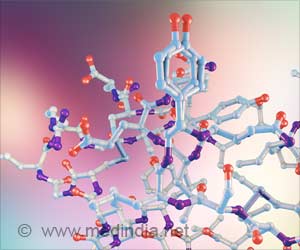Scientists know that the drug ketamine -- street name "Special K" -- can induce schizophrenia-like symptoms in drug abusers.
Scientists know that the drug ketamine -- street name "Special K" -- can induce schizophrenia-like symptoms in drug abusers. Ketamine is also used as an anesthetic and, more recently, as an antidepressant -- raising concerns by researchers at the UCSD School of Medicine, who have found that ketamine leads to the impairments in brain circuitry observed in both drug abusers and schizophrenic patients by causing increased production of a toxic free radical called "superoxide."
A research team led by Laura Dugan, M.D., Larry L. Hillblom Professor of Geriatrics and research scholar with the UCSD Stein Institute for Research on Aging, discovered an unexpected link between the inflammatory enzyme complex NADPH oxidase and the dysfunction of certain brain neurons exposed to ketamine. NADPH oxidase is normally found in white blood cells circulating outside the brain, where it helps kill bacterial and fungal infections by producing superoxide, a compound that can cause substantial damage to cells.“Because of NADPH oxidase’s protective role in fighting infection, it was very surprising to find that the complex wears a second hat – it is also critical for modulating signaling in the brain,” said first author M. Margarita Behrens, Ph.D., Division of Geriatric Medicine, UCSD School of Medicine.
According to Behrens, it was known that ketamine initially impairs the inhibitory circuitry in the brain’s cortex and hippocampus by blocking the NMDA receptor, a molecule on the cell surface that controls the activity of neurons. But the UCSD researchers discovered that, as a result of blocking the receptor, ketamine also substantially increased the activity of NADPH oxidase, causing further disruption of neuronal signaling.
“Ketamine causes a ‘disinhibition’ of brain circuitry, taking the brakes off the system and causing overexcitation of the brain in response to a stimulus,” said Behrens. “This overexcitation activates NADPH oxidase, which then produces superoxide – resulting in detrimental changes in key synaptic proteins and profoundly affecting nervous system function.”
The result is impairment of the brain circuitry involved in memory, attention and other key functions related to learning. Loss of such functions sets up individuals for psychosis and deficits in information processing, resulting in symptoms such as hallucinations and delusions, as well as social withdrawal and cognitive problems, according to Behrens.
Using ketamine, Behrens and Dugan mimicked features of schizophrenia in mice, and then analyzed neurons in a region of the mouse brain that corresponds to the prefrontal cortex in humans where profound changes occur in patients with schizophrenia. The researchers found a substantial increase in the activity of NADPH oxidase, and that this activity made some neurons in this inhibitory circuitry “disappear.” When the researchers blocked the activity of NADPH oxidase with an inhibitor, or with a compound that annihilates superoxide, these neurons were protected.
Source-Eurekalert
KAR/M






